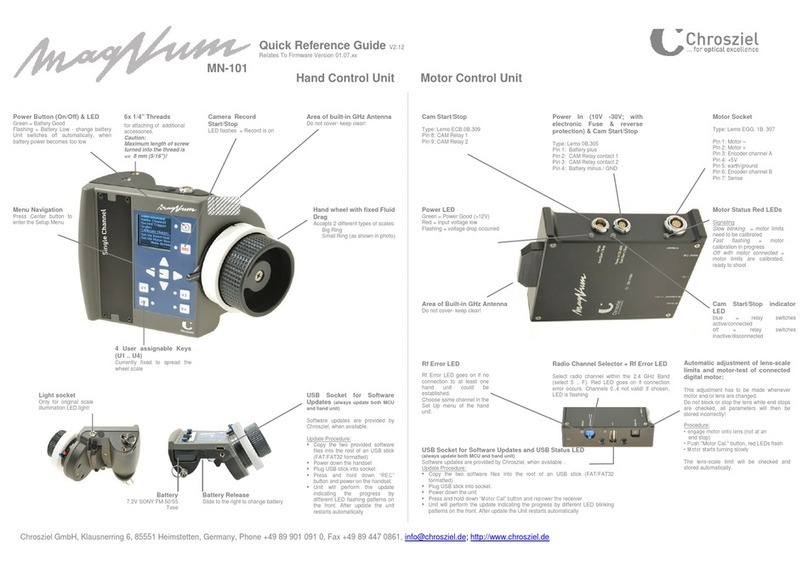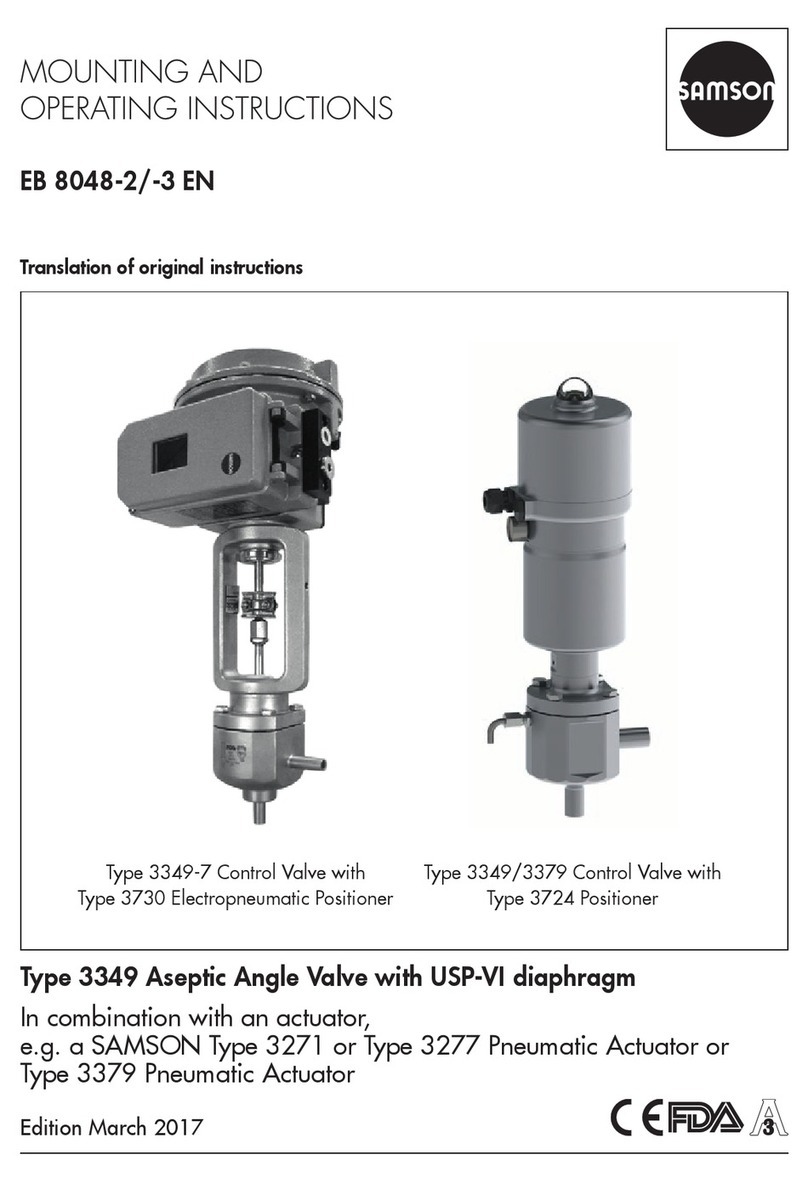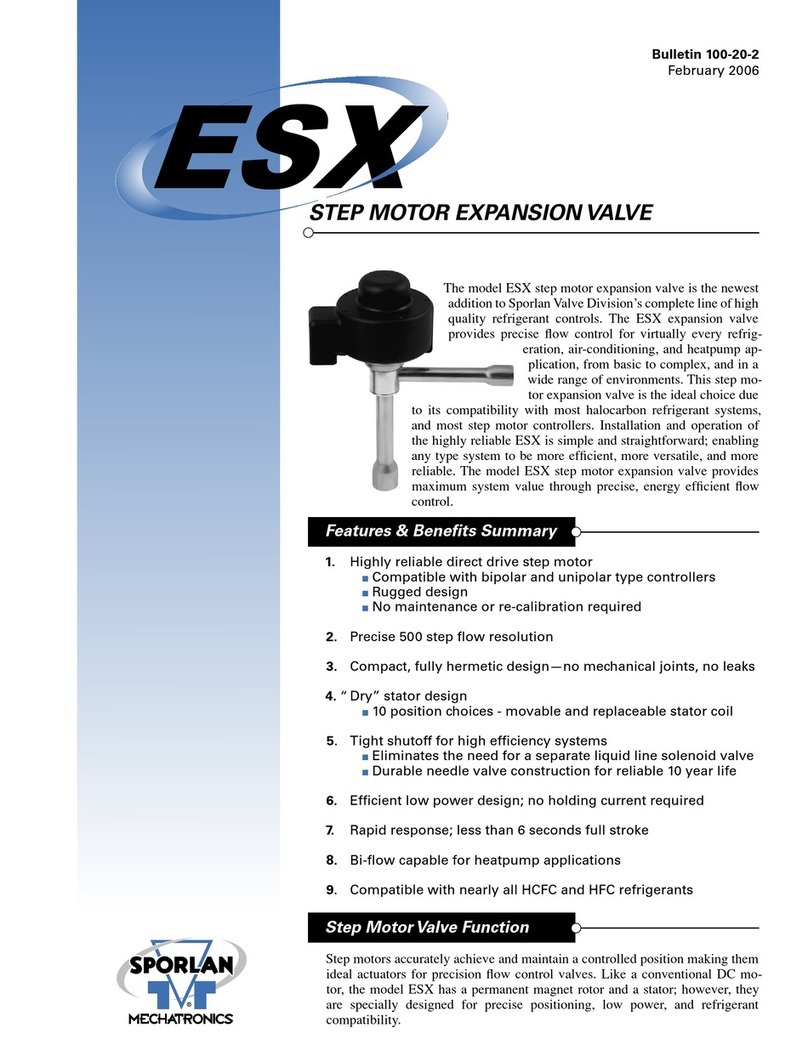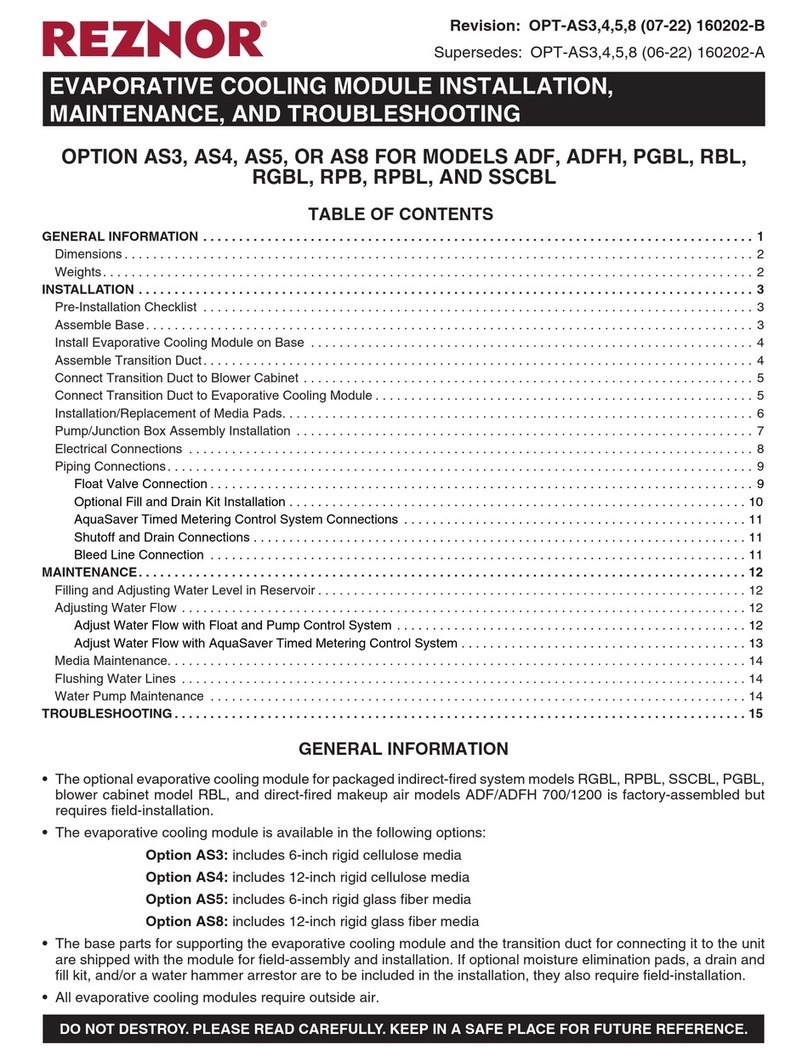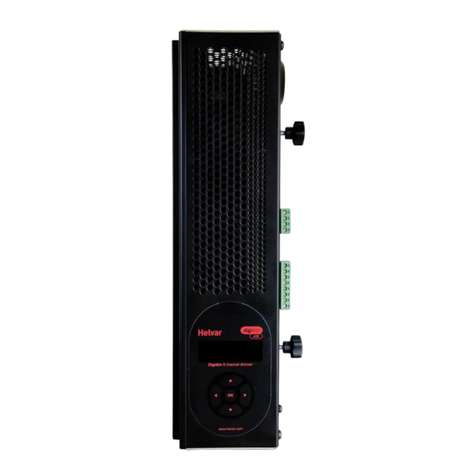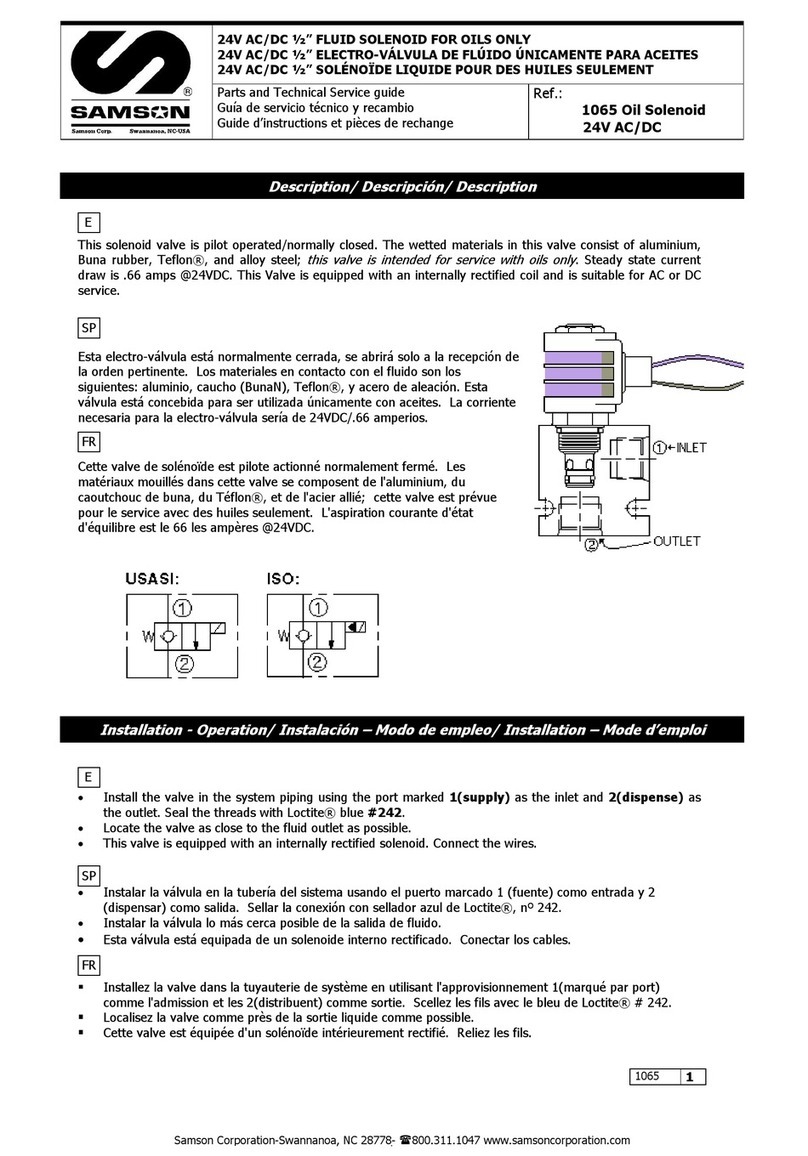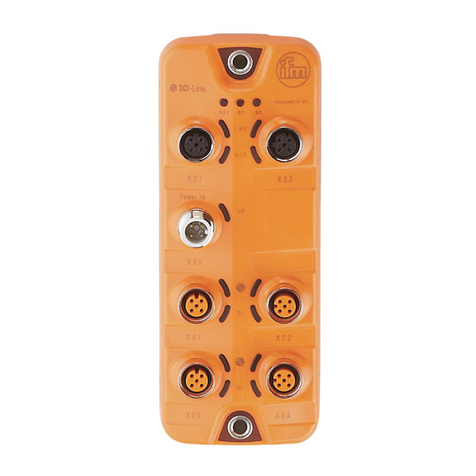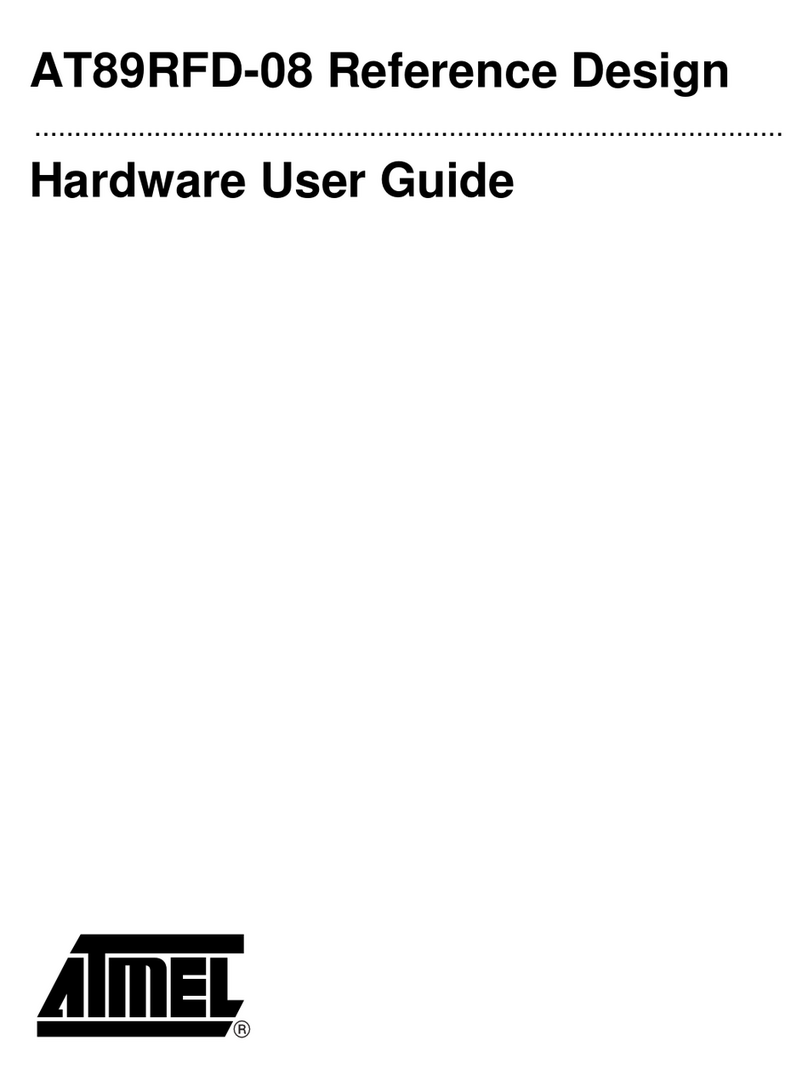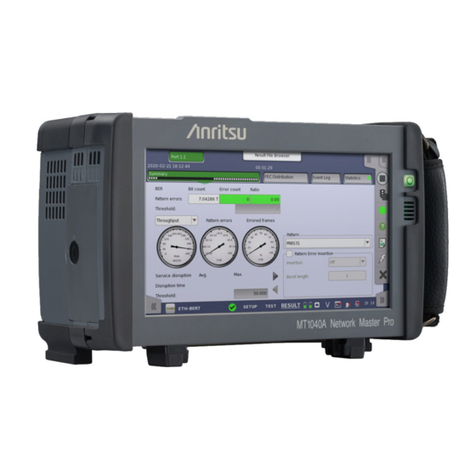Sielco Elettronica D1-15P User manual

D1-15P analog module
User’s guide

D1-15P analog module
User’s guide
Sielco Elettronica S.r.l.
via Edison 209 20019 Settimo Milanese (MI ) – Italia
Web site: www.sielcoelettronica.com
E-mail : [email protected]
Tel. 0248916252
Fax 0245329627

Contents
1 Installation.................................................................................................................1
1.1 Packaging check .......................................................................................................... 1
1.2 Dimensions.................................................................................................................. 2
1.3 Fixing method ............................................................................................................. 2
1.4 Physical module description........................................................................................ 3
1.5 Supply.......................................................................................................................... 4
1.6 Inputs........................................................................................................................... 5
1.6.1 Pt100/RTD sensors inputs............................................................................ 5
1.7 Serial communication.................................................................................................. 6
1.7.1 Serial link ..................................................................................................... 6
1.7.2 Communication protocol.............................................................................. 7
1.7.3 Device identification .................................................................................... 7
1.7.4 Serial cable ................................................................................................... 8
1.8 Earth wiring and shielding .......................................................................................... 8
1.8.1 Earth wiring.................................................................................................. 8
1.8.2 Pt100 wiring ................................................................................................. 8
2 Operation.................................................................................................................10
2.1 Application ................................................................................................................ 10
A Gates list.................................................................................................................11
A.1 Numeric Gates (Holding Registers) ......................................................................... 11


1.1 Packaging check
1
1 Installation
1.1 Packaging check
Before starting installation, it is necessary to check that the packaging
contents is in compliance with your order. In the packaging there must be:
- # 1 D1-15P series module
- # 1 instruction manual
Check that the model code is in compliance with the ordered code and
verify that the manual edition correspond to the purchase year.
The models are:
D1-15P 6 three or two wires Pt100 inputs (with cable resistance
compensation)
The Pt100/RTD sensor inputs have the following features:
- Temperature range: from -199.9 to +500.0 °C (standard model)
- Precision : ±0,05 % full scale
- Resolution : 15 bit
- Max cable resistance: 20 ohm
D1 series modules are covered by 1 year of warranty except for damages
caused by tampering or wrong wiring.
The label on the modules backside certificates the purchase date.

1 Installation
2
1.2 Dimensions
The D1-15 modules dimensions are shown in figure 1.1.
Figure 1.1 - D1-15P module dimensions
1.3 Fixing method
All D1 series products are provided by a plastic support for fixing on
normalized DIN EN rail and by a shielding serigraphed cover.
On the cover there are schematic mounting indications; in grey areas are
shown the interface circuits that are inside the module, in yellow areas
common use sensors and actuators to be connected externally.
The cover serigraph provides only a general wiring diagram and cannot
show every possible connection cases; for this reason it is necessary to
read carefully this manual before starting module installation.
Do not use excessive pressure on the cover, mounting or dismounting the
module on the rail. Remember to do these operations with supply voltage
switched off or not connected.

1.4 Physical module description
3
1.4 Physical module description
Figure 1.2 - D1-15P scheme

1 Installation
4
Description
[C1] RS422/485 serial channel connector
[C2] +24 Vdc supply connector
[M1] Analog inputs screws
[M2] Pt100/RTD sensors inputs screws
DIPSW Protocol and device address selection dipswitch
Led LA Supply led
Led LM Selftest led (normally blinking)
Led TX Transmitted data led
Led RX Received data led
422 485 RS422 or RS485 line selection jumper
3/2
WIRES
3 with with cable resistance compensation or 2
wires Pt100 selection jumper
[C1] - RS422/485 serial channel connector
RS422
RS485
1
RX– 1
N.C.
2
RX+ 2
N.C.
3
TX– 3
TX–/RX–
4
TX+ 4
TX+/RX+
[C2] - +24 Vdc supply connector
POWER
1
+24 Vdc
2
FIELD GND
3
MECH. GND
1.5 Supply
The module needs a 24 Vdc (18V < Vdc < 36V) supply by [C2] connector
and absorb a maximum current Icc=70 mA at 24 Vdc.
The negative power supply must be connected to pin #2 of [C2] connector.
After power is turned on, check that LA led is on.

1.6 Inputs
5
1.6 Inputs
1.6.1 Pt100/RTD sensors inputs
To D1-15P modules can be connected Pt100 sensors.
WARNING! Be sure that the sensors used are in compliance with IEC 751
standard.
Choosing the sensor, be sure that the wires connected to the sensor are
electrically isolated from its metallic case. Dispersion currents towards the
sensor metallic case can be detrimental to the precision of the reading.
Pt100 sensors can be 2 or 3 wires type; for connection see figure 1.3.
Figure 1.3 – 3 wires Pt100 connections
Sensor choice can be done setting the proper jumper on the left side (3
wires) or on the right side (2 wires)
The cable loop resistance must be less than 20 ohm (measure taken
between start loop screw and the end loop screw with a short circuit
instead Pt100).
The recommended cable is a twisted pairs conductors cable (the first wire
must be twisted with the second) with shielding and self-extinguishing
insulating coating.
Do not connect Pt100 using single wires not belonging to the same cable:
the outward wire resistance (first wire connected at the first screw of each
set of three) must be the same of the inward wire one (second wire
connected at the second screw of each set of three).

1 Installation
6
1.7 Serial communication
1.7.1 Serial link
To connect to D1 modules, it is necessary to use a RS422/485 serial
interface that usually are not standard equipment in personal computers.
SIELCO produces C1-25 model, a RS232-RS422/485 serial interface
converter with triple optical isolation that can be connected to PC serial
port (COM) and to D1-15 [C1] connector as shown in table 1.1.
C1-25 D1-15P
# RS-422 RS-422 #
1 GND ←→ GND 2 C2
2 RX– ←→ TX– 3 C1
3 RX+ ←→ TX+ 4 C1
4 TX– ←→ RX– 1 C1
5 TX+ ←→ RX+ 2 C1
6 0 V
7 +24 V
C1-25 D1-15P
# RS-485 RS-485 #
1 GND ←→ GND 2 C2
2 n.c. n.c. 1 C1
3 n.c. n.c. 2 C1
4 TX–/RX– ←→ TX–/RX– 3 C1
5 TX+/RX+ ←→ TX+/RX+ 4 C1
6 0 V
7 +24 V
Table 1.1 - C1-25 - D1-15P (RS 422/485) wiring
D1-15P modules are provided with configurable serial interface
RS422/485, normally configurated as RS485. To change configuration you
have to move the 422/485 jumper placed upper on the printed circuit
board.

1.7 Serial communication
7
1.7.2 Communication protocol
Software communication protocol is realised according to ModBus ASCII
or RTU standard: protocol selection is made by #2 selector of dipswitch
(ON=RTU, OFF=ASCII).
The baudrate selection is made by #1 selector of dipswitch (ON=19200,
OFF=9600).
ASCII protocol features
Baud rate 9600 / 19200
Data bits 7
Parity bit even
Stop bit 1
RTU protocol features
Baud rate 9600 / 19200
Data bits 8
Parity bit none
Stop bit 1
NOTE
At power on, the device waits 4 seconds to communicate.
1.7.3 Device identification
To D1-15P can be assigned an identification address between 1 and 31
through binary notation, using selector from 4 to 8 of dipswitch (see table
1.2).
ADDRESS
1 2 3 4 5 6 7 8
BAUD PROT.
252423222120
ON
19200
RTU
OFF
9600 ASCII
Table 1.2 - Address configuration using dipswitch
NOTE
Address 0 is reserved.

1 Installation
8
1.7.4 Serial cable
Use shielded cable with one (RS-485) or two (RS-422) twisted pair in
compliance with EIA RS-485 or EIA RS-422; using the shield for ground.
Recommended cable: Belden 9841 (RS-485);9842 (RS-422)
Maximum signal loss: 6 dB
Maximum line capacitance: 100 nf
Maximum line length: 1200 m
Line impedance: tra 100 e 120 ohm
1.8 Earth wiring and shielding
1.8.1 Earth wiring
It is suggested to make the following earth:
- device mechanical ground (pin #3 of [C2] connector) goes
directly to earth;
- the power supply negative signal (pin #2 of [C1] connector)
must be connected to a local earth.
It is important that device grounds are connected to earth independently; it
is also important to avoid to share the same wire path with power devices
as inverter, drives etc.
1.8.2 Pt100 wiring
Temperature reading is based on low intensity signal detection coming
from Pt100 sensors.
Parasite currents on the shields can induce disturbances that make reading
inprecise.
Follow these shielding rules particularly in environment noise affected by
power devices (motor driver , power contact etc.).
- use shielded and twisted cables for Pt100 sensors connection;
- keep connection cables as short as possible;
- it's better to make differents canalizations for Pt100 signals
and power signal conductors;

1.8 Earth wiring and shielding
9
- connect all metal Pt100 connection cables shields only on the
D1-15 side, leaving them non connected by the Pt100 sensor
side;
- connect all the metal shield at pin 3 of [C2] connector.
PT100 configuration
The D1-15P has a jumper to configure the input channels PT100 as 3-wire or 2
wire.
The configuration is valid for all 6 channels.
- In 3-wire configuration, the module autonomously performs two readings
1 ° - 2 ° wire and 1° - 3 ° wire . Then calculates the resistance of the line (on the
assumption that the resistance of the 2° wire is equal to resistance of 1° wire )
then calculates the line resistance and returns the numeric value of the real
temperature in the modbus message to the supervisor.
- In 2-wire configuration, the module reads 1 ° -2 ° wire and returns to the
supervisor a measure of the real temperature plus the amount due to line
resistance. The compensation shall be performed at the supervisor-level software
on a per channel basis , It must be known in advance or measured the error due to
line resistance expressed ditectly in °C (which is a constant and that will be
subtracted from all measurements made). The advantage of this last solution is that
the PT 100 sensor costs less and that there is a saving cost in plant management .

2 Operation
10
2 Operation
2.1 Application
D1-15P module is provided with 6 input channels for temperatures.
Temperature values are acquired using two or three wires Pt100 sensors
with automatic cable resistance compensation; acquired temperature values
are recorded in tenth degrees on a range from -2000 to +4000; for example,
a value of 275 means a temperature of 27.5°C. Recorded values are
available through the numeric reading gates T1, T2, T3, T4, T5 and T6.
Error gates indicate the presence of an input signal reading alarm; in case
of Pt100 error proceed unconnecting Pt100 sensors and checking that no
short circuit is present towards ground.
"Restart number" gate is only for diagnostic use and gives an indication of
the electrical disturbances presence.

A.1 Numeric Gates (Holding Registers)
11
A Gates list
A.1 Numeric Gates (Holding Registers)
Address Description ID Byte Range R/W
00 Restart number Rs 1 0: 255 R/W
01 Pt100 #1 temperature T1 2 -2000:+4000
R
02 Pt100 #2 temperature T2 2 -2000:+4000
R
03 Pt100 #3 temperature T3 2 -2000:+4000
R
04 Pt100 #4 temperature T4 2 -2000:+4000
R
05 Pt100 #5 temperature T5 2 -2000:+4000
R
06 Pt100 #6 temperature T6 2 -2000:+4000
R
07 Pt100 errors eT 2 00h:1FFh R
Pt100 errors– eT
(for every bit: 0 = OK / 1 = KO)
bit 0 Low sample
bit 1 High sample
bit 2 Pt100 #1 resistance numeric value
bit 3 Pt100 #1 line numeric value
bit 4 Pt100 #2 resistance numeric value
bit 5 Pt100 #2 line numeric value
bit 6 Pt100 #3 resistance numeric value
bit 7 Pt100 #3 line numeric value
bit 8 Pt100 #4 resistance numeric value
bit 9 Pt100 #5 line numeric value
bit 10 Pt100 #5 resistance numeric value
bit 11 Pt100 #5 line numeric value
bit 12 Pt100 #6 resistance numeric value
bit 13 Pt100 #6 line numeric value
Table of contents
Other Sielco Elettronica Control Unit manuals
Popular Control Unit manuals by other brands
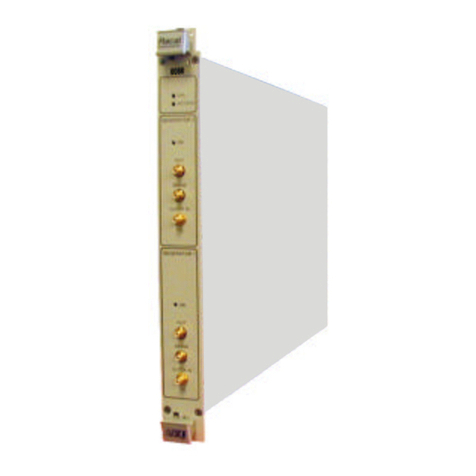
Racal Instruments
Racal Instruments 7064R-S-1844 instruction manual
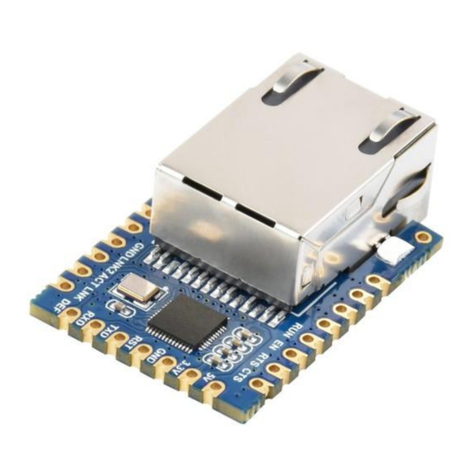
Waveshare
Waveshare UART TO ETH user manual
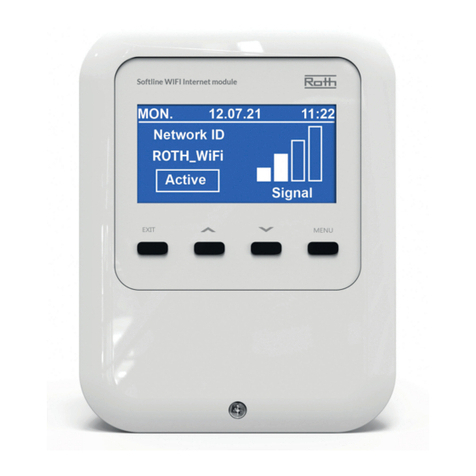
Roth
Roth Softline manual
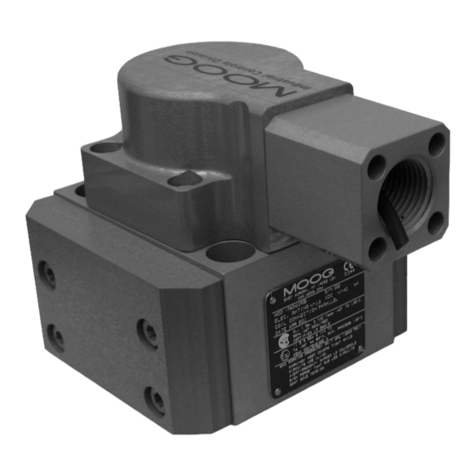
Moog
Moog 78N Series Installation and operation instruction
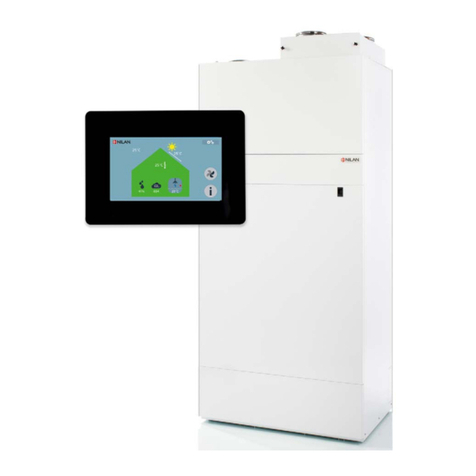
nilan
nilan Compact P Polar EK 6 kW CTS 700 user manual

Richter
Richter GR/F Series Installation and operating manual


